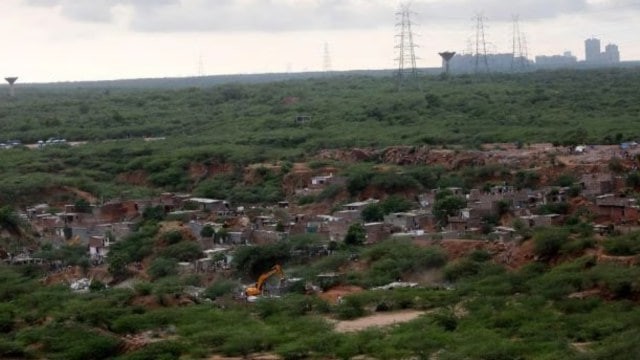



India is developing a Climate Finance Taxonomy to guide sustainable investments and bridge a $170 billion annual climate finance gap by 2030. A CSEP report emphasizes that the taxonomy must be practical, inclusive, and aligned with domestic priorities while remaining credible to global investors. Key recommendations include supporting MSMEs, integrating adaptation finance, promoting indigenous innovations, and ensuring coordination between RBI, SEBI, and the Ministry of Finance. The framework should be dynamic, evolving with technology and market needs to effectively channel finance toward India’s real climate goals.

Copyright infringement not intended
Picture Courtesy: Down to Earth
As India prepares its climate finance roadmap ahead of COP30, the Centre for Social and Economic Progress (CSEP) released a report urging the government to design a Climate Finance Taxonomy Framework that is practical, inclusive, and adaptable, rather than a rigid compliance tool.
A taxonomy is essentially a system of classification. It organizes things into categories based on shared characteristics or criteria, making it easier to understand, compare, and analyze them.
In different contexts, it can mean:
Taxonomy = organized system for classifying and understanding things.
Climate Finance Taxonomy is a structured framework that classifies economic activities based on how they contribute to climate goals, such as reducing greenhouse gas emissions or enhancing climate resilience. It essentially tells investors, banks, and regulators which activities can be considered “green” or climate-aligned.
Purpose
Key Features
Why It Matters for India
Key Objectives
The framework uses a hybrid approach: starting with qualitative criteria (for broad inclusion) and moving gradually toward quantitative benchmarks (emission thresholds, performance metrics).
Activities are classified into at least two broad categories:
The taxonomy also emphasises inclusivity — especially recognising that MSMEs (micro, small & medium enterprises) have different capacities and should be incorporated via staggered criteria.
Initial focus sectors include:
Complexity and Technical Barriers
Limited Adaptation Focus
MSME Inclusion
Coordination Across Institutions
Risk of “Transition-Washing”
|
Global Lesson |
Issue Observed |
Takeaway for India |
|
Avoid Excessive Complexity |
EU and ASEAN taxonomies are highly technical, hard for smaller businesses |
Keep the framework practical and implementable for all sectors, including MSMEs |
|
Standardize Data & Reporting |
China and South Africa face inconsistent data standards |
Establish clear, consistent metrics for climate-aligned activities |
|
Focus on Adaptation |
Global models often underrepresent adaptation projects |
Include resilient agriculture, coastal protection, urban water systems |
|
Ensure International Interoperability |
Some taxonomies struggle to align with global investor standards |
Maintain credibility with international capital markets while addressing local priorities |
|
Include MSMEs & Informal Sectors |
Smaller enterprises are often excluded |
Design proportionate eligibility and simplified reporting for MSMEs |
|
Keep Taxonomy Dynamic |
Static frameworks fail to adapt to new technologies |
Make the taxonomy a living instrument, regularly reviewed and updated |
Practical and Inclusive Framework: Ensure the taxonomy is user-friendly and accessible for all sectors, including MSMEs and informal businesses.
Balance Global Credibility with Domestic Relevance: Align with international standards while reflecting India’s development priorities like job creation, resilience, and inclusion.
Strengthen Adaptation Finance: Include projects that enhance climate resilience, such as sustainable agriculture, urban water management, and coastal protection.
Promote Indigenous Innovation: Encourage homegrown climate technologies while maintaining interoperability for foreign investment.
Dynamic and Evolving Policy: Regularly review and update the taxonomy to reflect changes in science, technology, and market conditions.
India’s draft Climate Finance Taxonomy is a crucial step toward mobilizing investments for a low-carbon and climate-resilient economy. By providing a structured framework, it aims to guide investors, banks, and policymakers in identifying climate-aligned activities while balancing global credibility with domestic priorities. The draft emphasizes inclusivity, covering MSMEs and adaptation projects alongside traditional mitigation sectors. Its success will depend on clear policy coordination, periodic updates, and practical implementation that reflects India’s development goals and climate commitments. Ultimately, if effectively executed, the taxonomy can become a transformative tool to channel finance toward India’s real climate priorities.
Source: Down to Earth
|
Practice Question Q. “India’s climate finance taxonomy must be practical, inclusive, and dynamic to achieve its climate goals.” Discuss in the context of global lessons and India’s draft taxonomy (250 words) |
A climate finance taxonomy is a system that classifies economic activities as climate-aligned or sustainable. It helps investors, banks, and regulators identify projects that contribute to climate mitigation and adaptation.
India aims to mobilize domestic and international investments for climate action, close the $170 billion annual climate finance gap, and provide a clear framework for sustainable finance in line with national priorities.
Unlike global frameworks, India’s taxonomy focuses on domestic priorities such as MSME inclusion, job creation, and climate resilience while maintaining credibility for international investors.






© 2025 iasgyan. All right reserved